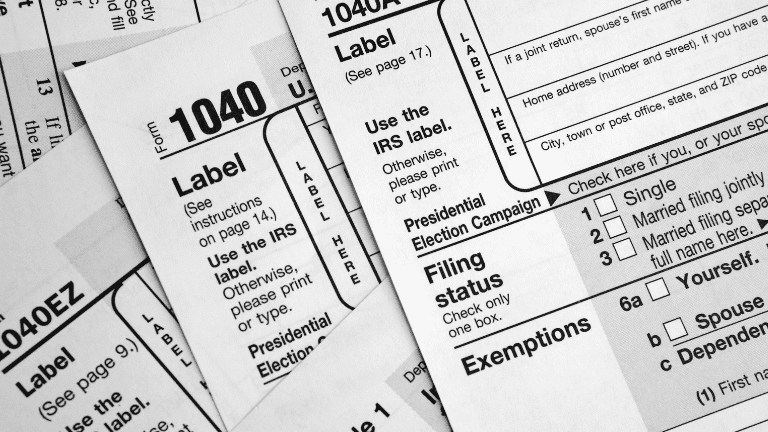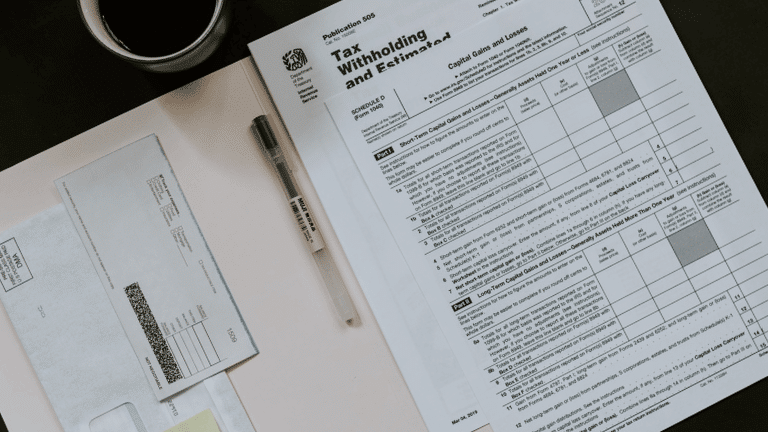When it comes to building wealth and leaving a financial legacy, most people focus on how much they can accumulate. But what many overlook is how much of that money will actually reach their family, and how much could end up going to the IRS instead.
One of the most powerful yet underutilized strategies in estate and tax planning is Roth conversion strategies. While often discussed in the context of retirement planning, Roth conversions can play a key role in reducing the future tax burden on your heirs and maximizing the impact of the wealth you leave behind.
Today we’ll break down exactly how Roth conversions work, why they’re valuable for estate planning, and how to decide whether this strategy is right for you.
Listen Now: iTunes | Spotify | iHeartRadio | Amazon Music
What Is a Roth Conversion?
A Roth conversion is the process of transferring money from a traditional retirement account (like a traditional IRA or 401k) into a Roth IRA. When you make the conversion, you pay ordinary income tax on the amount you transfer, but after that, the funds grow tax-free, and withdrawals are also tax-free, assuming the account has been open for at least five years and you’re over age 59½.
People often use Roth conversions when they expect to be in a higher tax bracket later or want to maximize tax-free income in retirement. But there’s another layer to this strategy: reducing the tax burden on your heirs.
Why Roth Conversions Matter for Estate Planning
Thanks to recent tax law changes under the SECURE Act and SECURE 2.0, inherited IRAs now come with a strict timeline. If a non-spouse (such as a child) inherits your IRA, they must withdraw all the funds within 10 years, and those withdrawals are taxed as ordinary income.
This is a big shift from the previous “stretch IRA” rule that allowed beneficiaries to spread withdrawals over their lifetime. The new 10-year rule compresses the tax liability into a much shorter period, often hitting heirs during their peak earning years.
For example, let’s say your child earns $120,000 annually and inherits a $500,000 IRA. Instead of spreading withdrawals out over decades, they have to withdraw all the funds within 10 years. That could push their income over $170,000 in a given year, bumping them into a much higher tax bracket and significantly reducing what they ultimately get to keep.
By converting portions of your IRA to a Roth IRA during your lifetime, you pay the taxes now, and your heirs inherit an account that grows tax-free and can be withdrawn tax-free. Even though they still have to empty the account within 10 years, the absence of taxes makes it far more beneficial.
Real-World Example: A Client’s Legacy in Action
We recently worked with a client who brought her adult son to a financial planning meeting. She was a single woman in her 70s, financially secure, and had no need to rely on her IRA for living expenses. Her son, a successful professional, was in a significantly higher tax bracket than she was.
If she left her IRA untouched and passed away, her son would inherit a sizable sum and an equally sizable tax bill. Not only would he need to withdraw hundreds of thousands of dollars within a decade, but each withdrawal would be taxed at his current income rate.
By contrast, if she slowly converted the IRA into a Roth over a period of several years, carefully keeping each conversion within her lower tax bracket, she could shoulder the tax bill at her lower rate, allowing her son to inherit a Roth IRA instead. He would still need to withdraw the funds within 10 years, but he wouldn’t owe a dime in taxes.
The approach of evaluating Roth conversion strategies not only preserved more of the money for her family, but it gave them more flexibility and peace of mind during an emotionally difficult time.
Understanding the Tax Bracket “Fill” Strategy
One of the most practical ways to approach Roth conversions is through “tax bracket filling.” The idea is to make use of your current marginal tax bracket without tipping into the next one.
Here’s how it works:
Let’s say you’re a single filer with $60,000 in taxable income. The 22% federal income tax bracket in 2025 goes up to about $95,375. That means you could convert up to $35,375 of IRA money and still stay within the 22% bracket.
By “filling the bracket” with Roth conversions, you can transfer funds without triggering a jump into a higher tax tier. This is especially effective if you’re in a low-tax phase of life, such as early retirement, before taking Social Security or required minimum distributions (RMDs).
This strategy is repeatable year after year and can gradually shift large portions of your traditional IRA into a Roth IRA while minimizing your total lifetime tax liability.
Why Timing Matters for Roth Conversions
The effectiveness of a Roth conversion strategy often comes down to timing. The most advantageous window tends to be:
-
After retirement but before you begin collecting Social Security
-
Before you are required to take RMDs at age 73 (or 75, depending on your birth year)
-
During years when your income is temporarily lower (job transition, business loss, early retirement, etc.)
In these windows, your marginal tax rate may be much lower than what it will be in future years, or what your heirs will face.
It’s also important to think about where tax policy is heading when considering Roth conversion strategies. Many financial professionals believe federal income taxes are likely to increase in the coming decades due to growing national debt and budget deficits. Paying taxes today, when rates are relatively low, could be a smart long-term decision.
A Closer Look at the 10-Year Inheritance Rule
The SECURE Act’s 10-year rule means that non-spouse beneficiaries must completely drain an inherited IRA within a decade. While there’s no rule that says the withdrawals must be taken evenly each year, they must be completed by the end of year 10.
The downside? If the heir waits too long and takes a large lump sum at the end of the 10 years, it could cause an enormous tax spike.
This rule does not apply to Roth IRAs in the same way. Beneficiaries still have to follow the 10-year withdrawal rule, but distributions are tax-free, as long as the Roth account has been open for at least 5 years.
That means your heirs can:
-
Let the money grow tax-free for up to a decade
-
Withdraw it at a time that suits their financial situation
-
Avoid adding taxable income during their highest-earning years
Who Should Consider Roth Conversions for Estate Planning?
Roth conversion strategies are especially effective for individuals who meet the following criteria:
1. Retired and in a lower tax bracket than their children
If your income has decreased but your children are in their peak earning years, it makes sense for you to pay the taxes now so they don’t get hit with a much larger tax bill later.
2. Financially secure and not dependent on IRA withdrawals
If you don’t need your traditional IRA for day-to-day expenses, you can afford to strategically convert and handle the tax costs over time.
3. Planning to leave a large IRA to heirs
The larger the IRA, the greater the potential tax burden on your beneficiaries. Roth conversions reduce this future liability.
4. Wanting to reduce estate size for tax purposes
While estate tax only affects a small percentage of families, converting to a Roth can reduce your estate’s taxable size while still preserving value for your heirs.
5. Believing tax rates will go up in the future
If you suspect federal income tax rates will increase over the next 10–20 years, locking in today’s lower rates could be a wise move.
When Roth Conversions Might Not Make Sense
Like all financial planning tools, Roth conversions aren’t right for everyone. Situations where it might not be ideal include:
You need the money now
If you rely on your IRA for income, the added tax burden of a conversion might not be worth it.
You’re currently in a high tax bracket
If your current tax rate is higher than what your heirs will face, paying the taxes now may not make sense.
You plan to donate the IRA to charity
Qualified charities don’t pay taxes on IRA distributions. Leaving your IRA to a nonprofit could be more efficient than converting it to a Roth.
You can’t afford the taxes from the conversion
Ideally, taxes on a conversion should be paid from cash savings, not from the IRA itself. If you have to dip into the converted funds to cover the tax bill, the strategy loses a lot of its effectiveness.
Debunking Common Roth Conversion Myths
Let’s address a few common misunderstandings:
Roth conversions are only for young investors
Reality: Roth conversions can be especially effective for retirees and those doing estate planning, especially if their tax bracket is lower than their heirs’.
You’ll lose money by paying taxes now
Reality: Paying taxes now at a lower rate can save money in the long run, especially if future tax rates are higher.
Roth IRAs don’t help with inheritance planning
Reality: Roth IRAs can be a powerful inheritance tool, especially under the 10-year rule — no required taxes means more flexibility and value for your heirs.
How to Execute a Roth Conversion Estate Strategy
If you’re considering this strategy, here are a few key steps to follow:
Step 1: Run Projections
Work with a CFP® or tax professional to analyze your current and future tax brackets, your heirs’ tax situations, and your long-term retirement needs.
Step 2: Start Small and Be Strategic
Don’t convert your entire IRA in one year. Spread conversions over several years to manage your tax bracket and avoid triggering unintended Medicare or Social Security impacts.
Step 3: Use Non-IRA Funds to Pay the Taxes
To get the full value of the conversion, pay the taxes using cash from savings. That keeps the entire converted amount growing tax-free.
Step 4: Communicate Your Plan
Make sure your heirs understand what you’ve done and why. Update your beneficiaries and document your estate plan accordingly.
Final Thoughts: Taxes Are Inevitable, But Smart Planning Isn’t
At the end of the day, the choice often comes down to this: Would you rather your money go to your family, or to the IRS?
Roth conversion strategies allow you to take control of that decision. When used strategically, they can reduce the long-term tax burden, offer more flexibility to your heirs, and help ensure that the wealth you worked so hard to build actually benefits the people you care about most.
It’s not a one-size-fits-all solution, but it’s one of the most powerful planning tools available if used at the right time, in the right way.
Need personalized Roth conversion strategies?
At Bonfire Financial, we help clients turn complex tax rules into smart, actionable strategies. We welcome you to schedule a call to see how Roth conversions could fit into your estate plan.
 Client Login
Client Login







